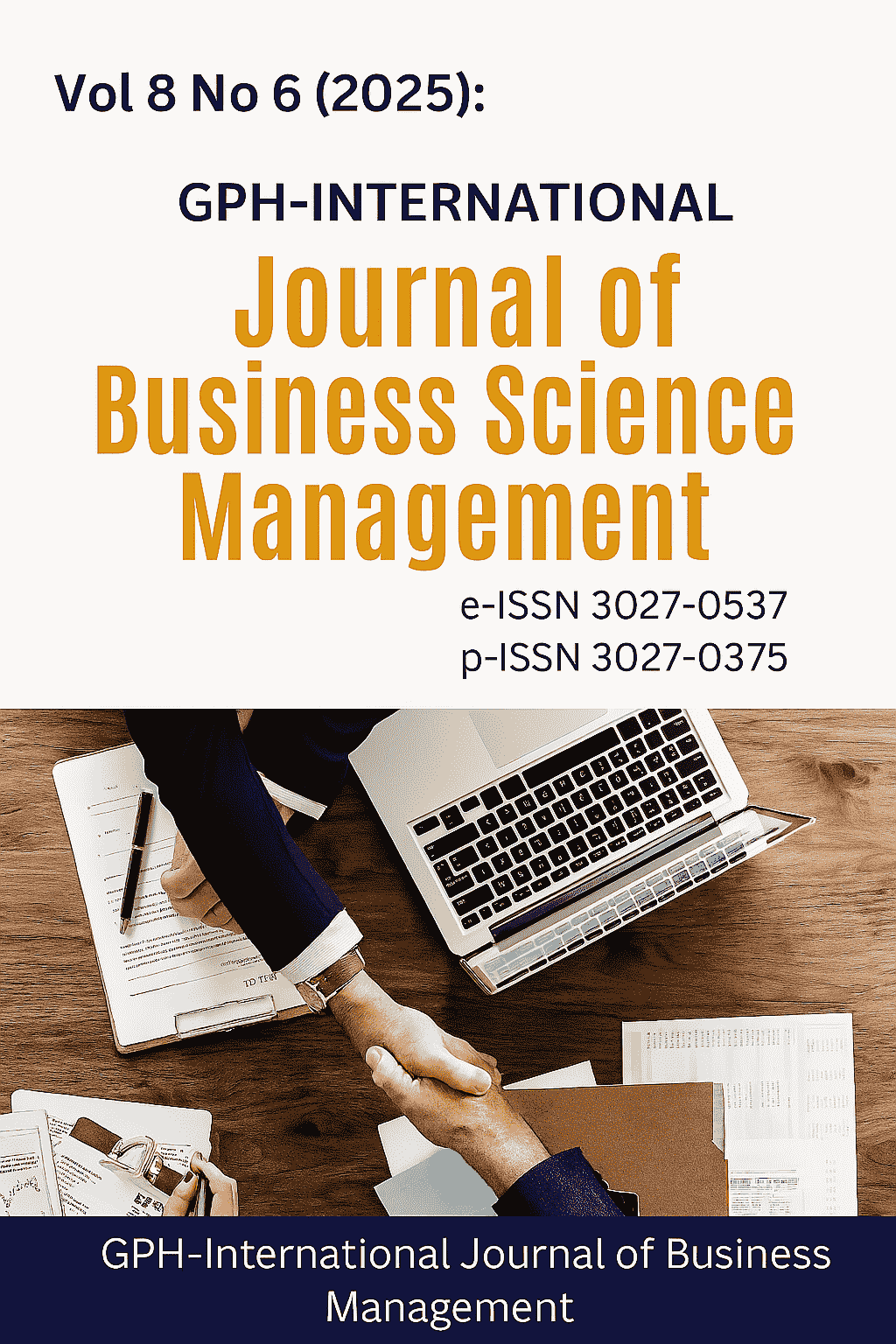Impact of Electronic Manpower Planning Practices on Organizational Performance in Manufacturing Companies in Cross River State
Abstract
This study investigated the impact of electronic manpower planning practices on organizational performance in manufacturing companies in Cross River State, Nigeria. In an era where technology-driven solutions are increasingly shaping operational efficiencies, the study explored the extent to which electronic manpower planning and electronic recruitment practices influence organizational outcomes. Adopting a descriptive survey design, the research sampled 258 human resource management personnel from 21 manufacturing companies in the state. Data were collected using a structured and validated questionnaire titled Electronic Human Resources Management Practices and Organization Performance Questionnaire (EHRMPOPQ), with a reliability coefficient of 0.82. Linear regression analyses revealed that electronic manpower planning practices accounted for 50.4% of the variation in organizational performance, while electronic recruitment practices explained 68.9% of the variance. The results showed that both electronic manpower planning and electronic recruitment practices significantly and positively impact organizational performance, leading to enhanced workforce efficiency, cost optimization, and improved employee satisfaction. The study concludes that the adoption of electronic manpower planning systems is instrumental in fostering operational excellence and recommends that manufacturing companies invest in advanced electronic HR systems, continuous employee training, and robust data security measures. By doing so, they can sustain competitive advantage and achieve higher levels of productivity in an increasingly digitalized industrial landscape.
Downloads
References
Alkhadher, O., Anderson, N., and Cl arke, D. (2014). Computer-based testing: A review of recent developments and practice. European Work and Organizational Psychologist, 4(2), 169-187.
Atallah, A. A. (2016).The Impact of Electronic Human Resource Management (E-HRM) on Organizational Development of UNRWA in Gaza Strip. A master thesis of the Department of Business Administration, Faculty of Commerce, Islamic University Gaza. Retrieved from www.book-14405.pdf-Adobe-Acrobat Reader DC on 27th March, 2025.
Bondarouk, T. & Ruel, H. (2014). Electronic human resource management: Challenges in the digital era. Special issue of International Journal of Human Resource Management, 20(3), 505.
Boudreau, J. W. (2017). Human resource management practices and productivity: A case of selected multinational corporations in Nigeria. International Journal of Business and Management Invention, 6 (5):41-47
CedarCrestone, (2019). 2018-2019 HR Systems Survey. Recruiting and attracting talent: a guide to understanding and managing the recruitment process. SHRM Foundation, Alexandria, VA.
Chien, C. F. & Chen, H. L. (2024). The impact of human resource management practices on organizational performance. Journal of International Business and Economics, 11(3), 27-42.
Dulebohn, J. H. & Marler, J. H. (2015). E-compensation: The potential to transform practice? In H. G. Gueutal& D. L. Stone (Eds.), The brave new world of eHR: Human resources management in the digital age. San Francisco, CA: Jossey Bass.
Efuntade, A. O. & Akinola, A. O. (2021). Firm characteristics and financial performance in quoted manufacturing companies in Nigeria. International Journal of Business and Finanacial Management Research7(1);25-32.
Ejumudo, K. B. (2014). Pay Reward System Management and Staff Performance in Nigeria: A Study of the Delta State Civil Service. Public policy and Administration Research, 4(9), 79 -95.
Emerole, O. B (2015) the effect of non-monetary rewards on productivity of employees among the selected government parastatals in Nigeria: Journal of Business and Management, 17(2),06-11
Hamidianpour, F., Esmaeilpour, M. and Firoozi, H. (2016). Assessing the Impact of Electronic Human Resource Management on Creation of Organizational Agility: A Study in the Bushehr Banks, Iran. Asian Social Science, 12(7):105-118
Harris, D. (2023). Electronic manpower planning in the manufacturing sector: A case study approach. International Journal of Human Resource Management, 23(5), 1005-1022.
Jiang, J., & Chen, Z. (2019). Workforce planning and its impact on employee satisfaction in manufacturing firms. Journal of Industrial Relations, 43(2), 110-124.
Katua, T., Mukulu, E., &Gachunga, H. (2014). Effect of employee resourcing strategies on the performance of commercial banks in Kenya. International Journal of Education and Research, 2(1): 1-20.
Kim, S. Y. (2015). The role of electronic manpower planning systems in labor cost management. Journal of Applied Economics and Business, 23(4), 77-91.
Kumar, V., & Gopalakrishnan, R. (2012). Labor optimization strategies for improving organizational performance in manufacturing. International Journal of Operations and Production Management, 32(8), 981-1003.
Loto, M. A. (2012). Global Economic Downturn and the Manufacturing Sector Performance in the Nigerian Economy (A Quarterly Empirical Analysis). Journal of Emerging Trends in Economics and Management Sciences, 3 (1), 38–45.
Meyer, M., & Becker, T. (2014). The role of electronic manpower planning systems in improving workforce productivity. International Journal of Production Economics, 156, 36-46.
Njeje, D. A., Chepkilot, R. and Ochieng, I. (2018).E-human resource planning systems and its effect on organizational efficiency of Saccos in Kenya. International Journal of Economics, Commerce and Management, 7(1):693 – 708
Nivlouei, F. B. (2014). Electronic Human Resource Management System: The Main Element in Capacitating Globalization Paradigm, International Journal of Business and Social Science,5 (2), 147-159.
Richter, N. F., Schmidt, R., Ladwig T.J. and Wulhorst, F. (2017). A critical perspective on the measurement of performance in the empirical multi-nationality and performance literature, Critical perspectives on international business, 13(2): 94-118.
Sullivan, J. L. & Tang, J. L. (2016). Strategic human resource management: Practices and implications for organizational performance. Academy of Management Review, 41(3), 278-297.
Williamson, I. O., Lepak, D. P., and King, J. (2013). The effect of company recruitment website orientation on individuals’ perceptions of organizational attractiveness. Journal of Vocational Behavior, 63, 242-263.
The authors and co-authors warrant that the article is their original work, does not infringe any copyright, and has not been published elsewhere. By submitting the article to GPH-International Journal of Business Management, the authors agree that the journal has the right to retract or remove the article in case of proven ethical misconduct.




























